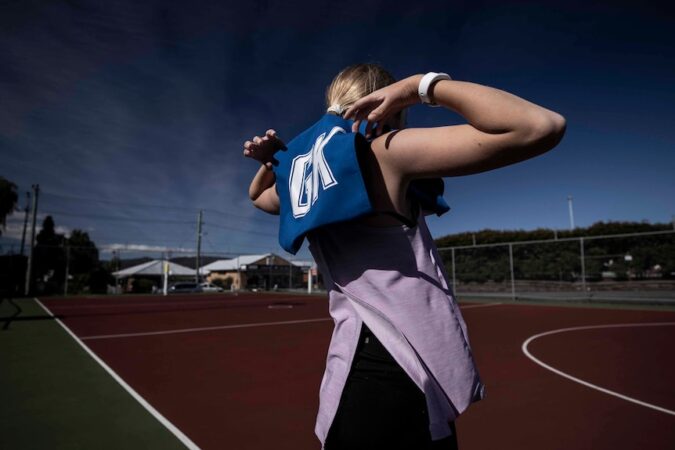
Your kid is still wearing that Matildas merch and bugging you to join a local soccer club, but you’re scared off by reports of sky-high club fees.
Junior sport can be a pretty costly endeavour.
So, how expensive is it? And how can junior sport in general become more affordable?
Soccer is pretty pricey, but it’s not the most expensive sport
We compared how much parents are spending to put their 12-14 year olds into our most popular sports. Keep in mind these figures are just the costs of participation – they don’t include equipment or travel.
According to the Australian Sports Commission’s 2018 AusPlay report, families spend a median $300 per year per child on soccer.
It’s more expensive than some other sports, including Aussie rules ($200 per year), netball ($200 per year) and cricket ($180 per year).
Basketball is just as expensive as soccer, also costing $300 a year.
And both lag behind swimming, at $400 per year.
Some soccer clubs do charge eye-watering fees to join. Junior teams within National Premier Leagues (NPL) — the pathway to the Football Association’s elite level — can cost as much as $2,500 a year.
But many blame that on the financial structure of NPL clubs, which use some fees paid by the youngsters to pay their top players.
Sports science professor Rochelle Eime says that’s just one thing that should change to achieve the structural reform needed in junior sport.
“Across community sport, there are many instances with male senior players getting paid substantial weekly playing fees, and that can add great pressure to the clubs’ overall financial situation,” she says.
“While sponsorship can contribute to player payments, it is likely that some clubs dip into the overall club membership fees to contribute to player payments, and that will ultimately drive up participation costs for juniors.”
Local sports clubs over-reliant on volunteers, expert says
Professor Eime is trying to change the face of how sport is run in Australia, as one of a group of researchers seeking funding for a joint project between Victoria University and Federation University called “Making Sport Affordable”.
“We haven’t really changed or looked at the model of sport in Australia for a long, long time,” she says.
“It’s still delivered the way it was generations ago, but society’s changed, technology’s changed. So I think we need to consider how we can be smarter with our time and resources.”
She says local sports clubs are depending too much on volunteers, who increasingly require greater skill sets to handle greater regulation, such as governance and child protection, as well as run the canteen and organise match day.
One of the possible solutions could be shared services.
“Is it, for example, a canteen manager across three clubs, that might be a semi-paid position rather than one person having to duplicate all these roles across all these clubs?” Professor Eime asks.
She says a ‘hybrid’, semi-professional model, while requiring an initial outlay, could in fact make money for clubs.
“For example, my boys’ local footy club just a couple of years ago started paying the canteen manager in a part time role,” she says.
“But in that time, she professionalised the canteen in terms of the services it provides, and the economic return has been astounding for that club. So sometimes, a little investment can have a bigger return.”
The project researchers first want to measure the true cost of playing sports, and trial a pilot to test how a new club model would work to minimise the cost of participation.
Parental pressure can push clubs to change
Professor Eime’s son’s Aussie rules club, near Ballarat in Victoria, now has club uniforms – jerseys owned by the club, that hands them out to kids and collects them at the end of each season.
It also abandoned having both home and away shorts after Professor Eime “argued for many years” for the change.
“People would say, ‘oh, it’s tradition’. And I said, ‘yes, but you can only wear one pair of shorts’. And the [local league] has actually changed that now,” she says.
“Two years later, no-one’s ever said anything about why haven’t we got two pairs of shorts,” she says.
“Another example is we don’t need [club-branded] socks … you can go to a sports store and just get generic socks for a third of the price. So we often think, oh, we’ve got to put our logo on this, but it actually just increases the cost to families.”
Sharing and borrowing equipment can cut costs
As the mother of twin boys who play different sports, Professor Eime recommends parents organise to share and borrow expensive equipment, particularly for younger kids as they try out sports they may soon abandon.
The expensive boots they soon grow out of can find another life if sold second-hand.
Professor Eime says just washing the boots her club put in a ‘swap bin’ made all the difference.
“No child wants to really go into that bin, find a dirty boot, and then find the other one,” she says.
“But if you put your all the footy boots in the washing machine that come out looking brand new, you could set them up on the bench and it looks like a shoe store [where you can sell them] for $10 or something like that.”
And in the end, Professor Eime recommends parents “shop around” – if your club is too expensive, there may be one nearby that isn’t.
Source: AFL NEWS ABC



